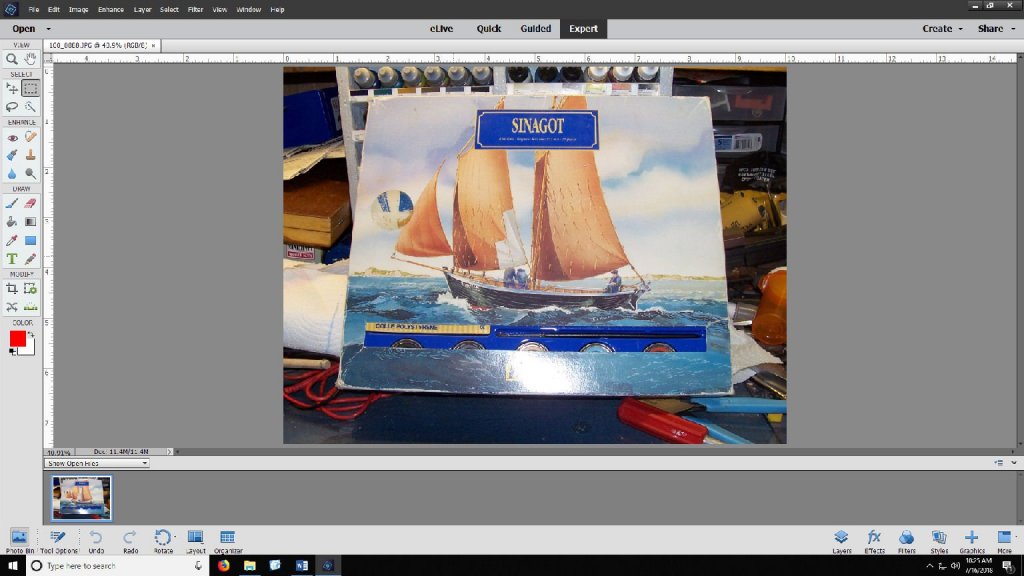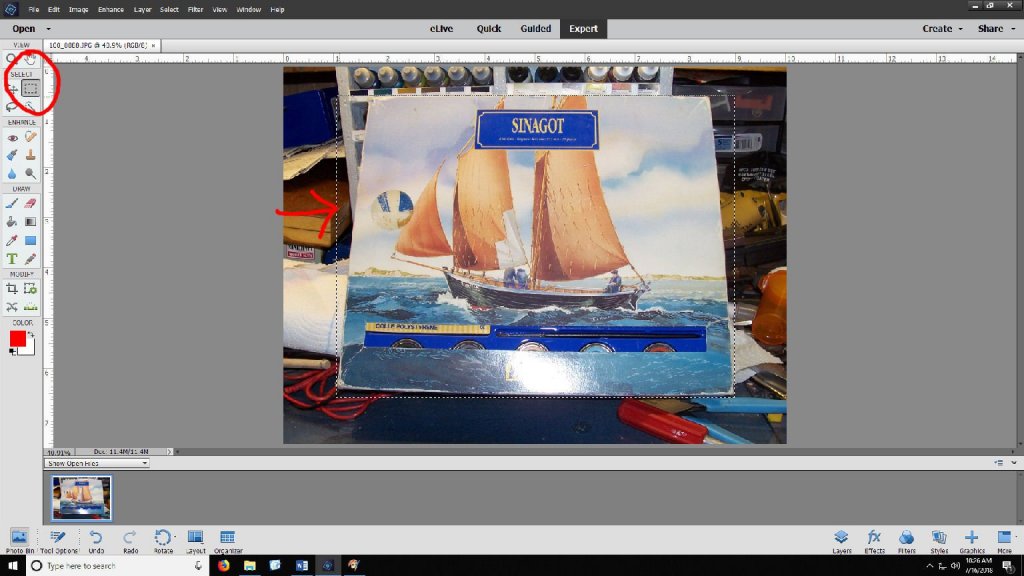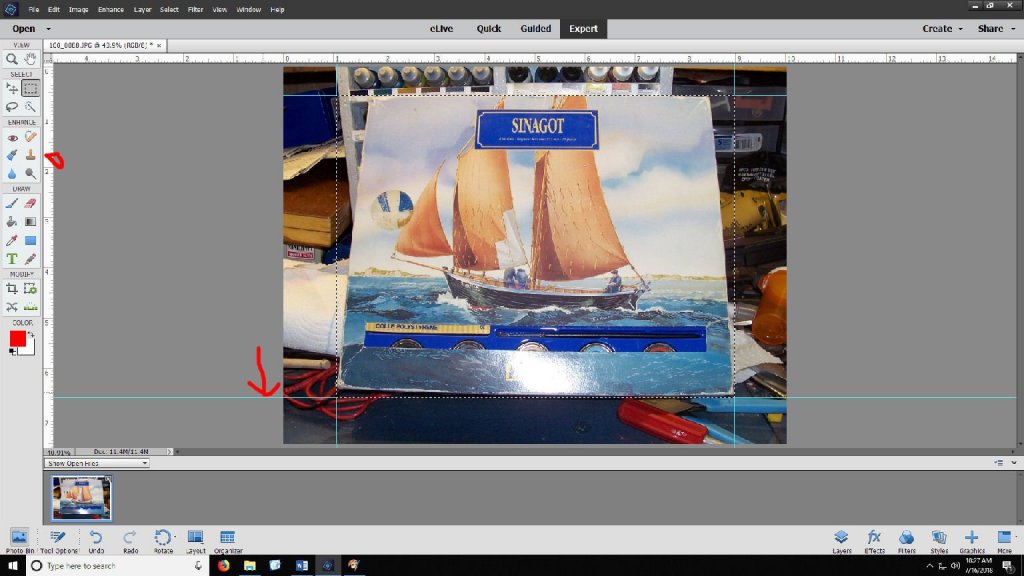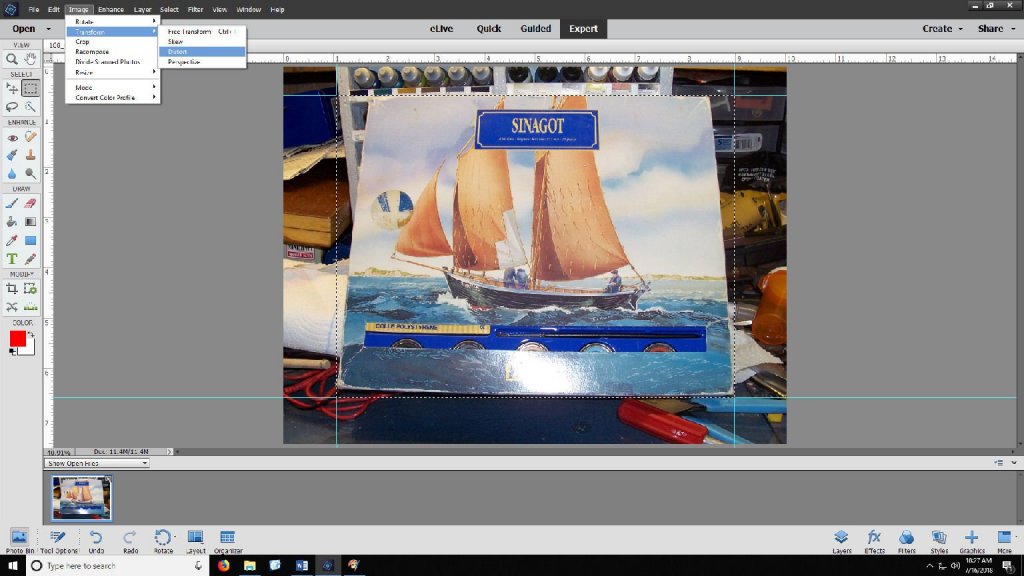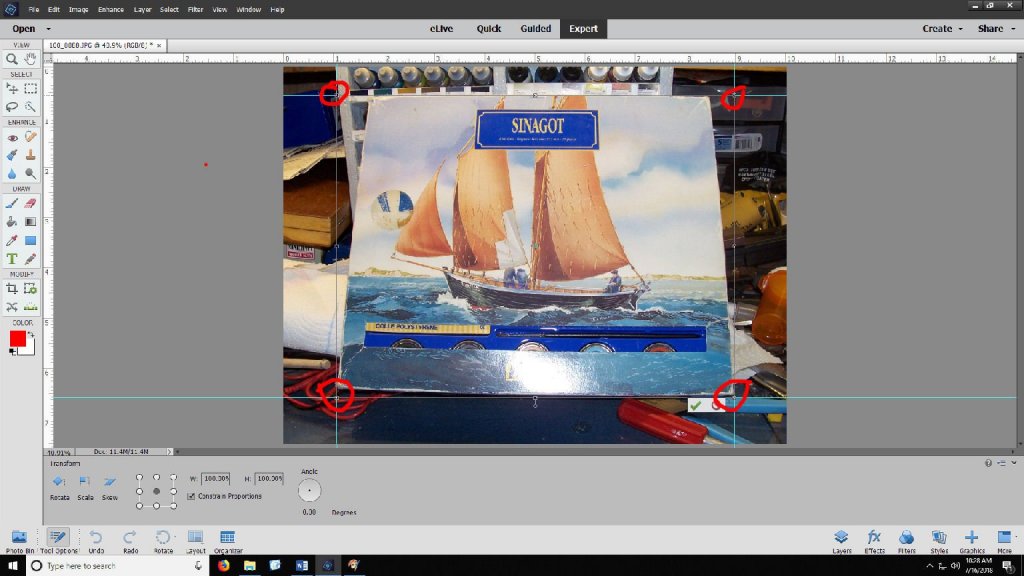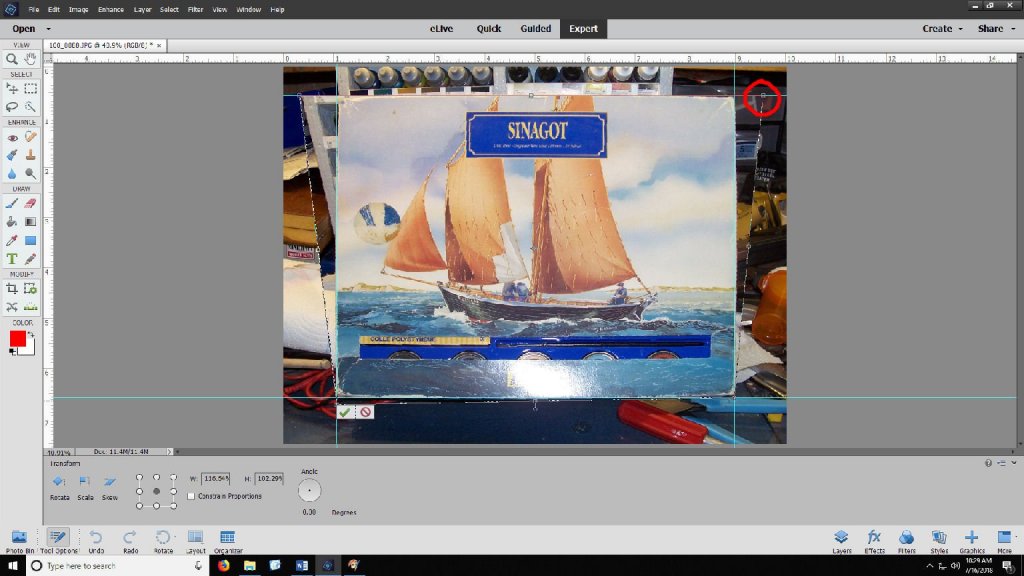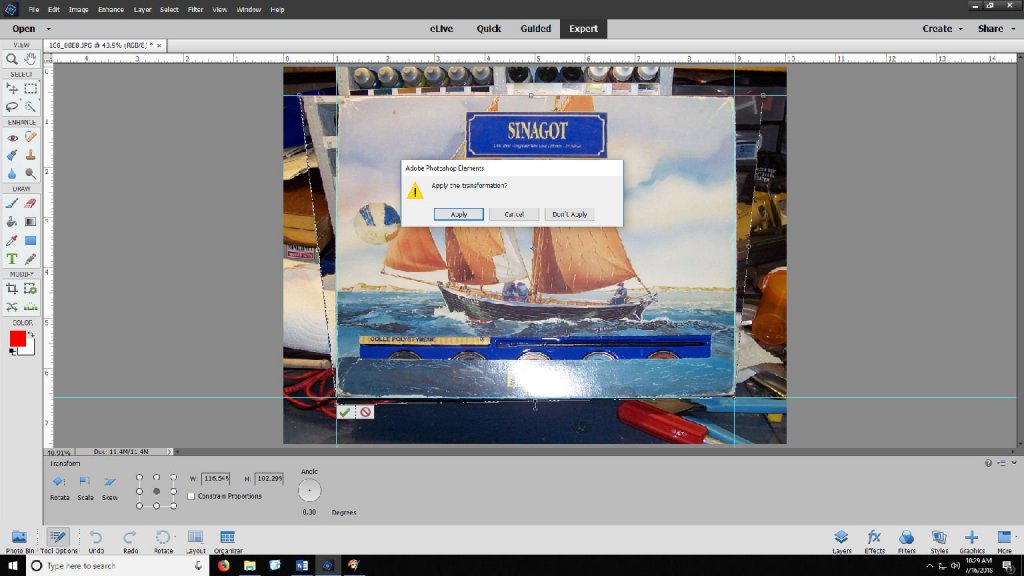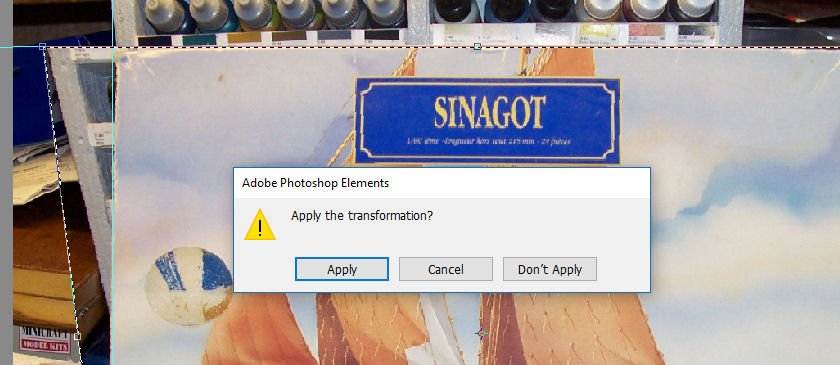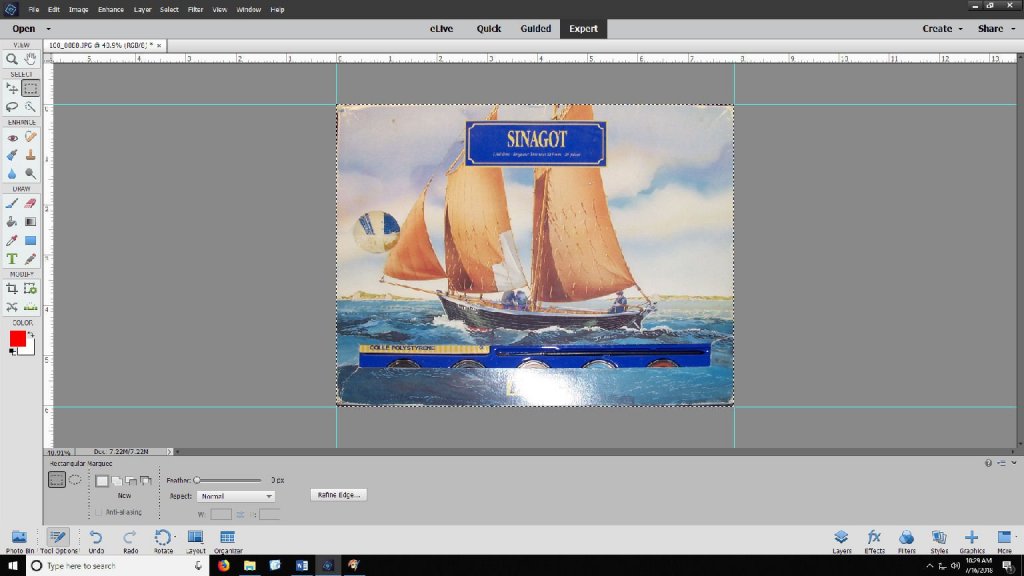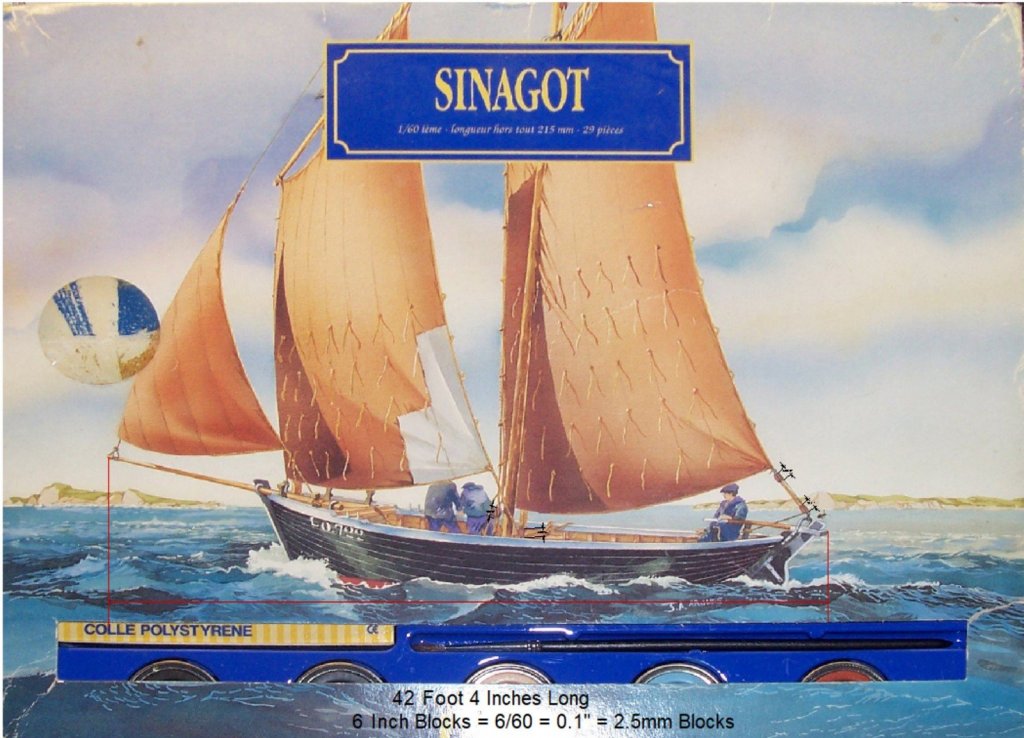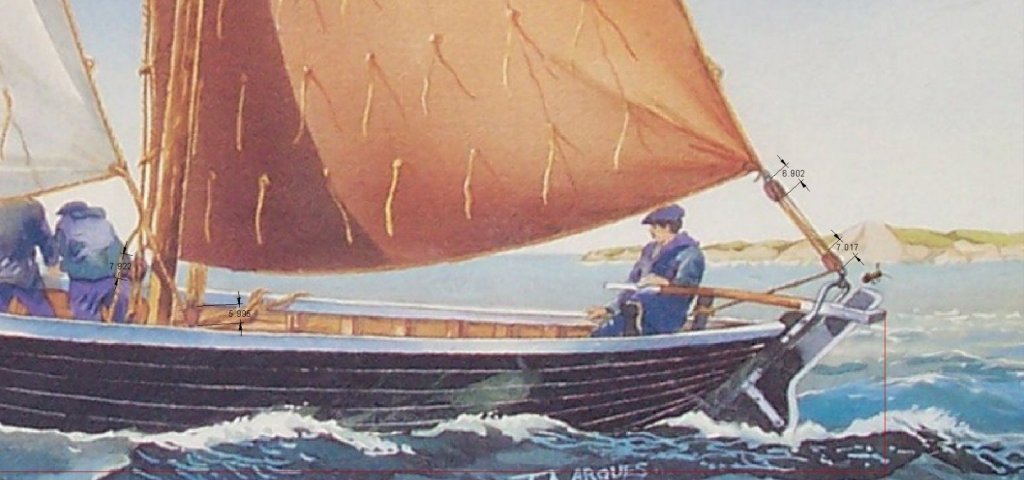-
Posts
2,887 -
Joined
-
Last visited
Content Type
Profiles
Forums
Gallery
Events
Everything posted by thibaultron
-
Chuck; Perhaps the Tick Marks could be laser etched on either the inside or outside scrap, and drawn onto the frame by the modeler, before they remove the frame from the waste wood. Rough drawing below.
- 421 replies
-
- medway longboat
- Syren Ship Model Company
-
(and 1 more)
Tagged with:
-
I have thoroughly enjoyed watching your restoration, and learned much from your techniques! A well done restoration, and instructional build!
- 749 replies
-
- albertic
- ocean liner
-
(and 2 more)
Tagged with:
-
The Syren blocks I ordered have come in 2mm and 3/32 single and doble blocks. Man are they tiny! I'm going to check the blocks on some of my 1/96 kits. I may have to move to a larger scale for future builds! There will be a delay before I continue on this build. There is a couple I know that are building a new home, and just found out that the husband has cancer. The trailer they have been living in leaks and he will not be able to move back into it, after Chemo, due to mold issues. I am helping them to finish the house, so they can move in. The local inspector, is being a real butt. Everything has to be just so, or he rejects it, not so a typical most times, but he keeps saying, "No one can build their own home now a days.", then he gives them a list of "Recommended" builders!
-
When I first started as an engineer in 77, we had a computer that had a Removable Hard Drive. The drive housing came in a crate about 2X2X6 feet! The removable portion was about the size of a cake holder, the ones you put a finished cake in. The "This Side UP" labels were about 4" square and had a hollow Arrow symbol On the frond was a clear tape, and inside the arrow were red foam beads along the bottom. If the crate was tipped on its side or upside down, the beads would flow downhill, and get stuck on the tape. There was two labels, one at each end of the crate. Thus we could tell if it had been mishandled during shipping. One day a drive came in with one of the arrow labels installed upside down. Our boss saw the label, with the beads stuck on it, and without checking the other label, or the other printed "This Side Up" labels painted on the crate, called the shipper, and cussed them out! Only later did he tell us about it, at which time we pointed out that that label, was upside down, not the crate!
- 749 replies
-
- albertic
- ocean liner
-
(and 2 more)
Tagged with:
-
PART 5 The kit did not supply any blocks for the rigging. They would be quite small, but I’m going to try to add them. The first thing I need to know, of course, is what size blocks are needed. The box art shows some blocks, so I decided to scale the blocks shown. Correcting skew and perspective in a photo – A quick guide The photo program I’m using is Photoshop Elements 15. As a note, the Photoshop “Elements” programs, are basically the prior version or two of the regular Photoshop software. I got my copy (a real licensed one) from Ebay for a reasonable fee. Note also, that the new version of Photoshop, is a subscription only software, so if you want a regular nonsuscription copy, find one now! First, I had to get a good picture to import into my CAD program. I started with the following photo. You can see that the box narrows at the top. I’m simply going to “square up” the picture. If this was a plan set, or I needed to create a drawing for modeling, I’d scan the material at a higher resolution, and be more careful of the XY scaling. This section is more to give you an idea of the process involved. First, using the “Selection Box” tool, I drew a box around the area in the photo I need to fix. Then I drew orthogonal guide lines (blue lines shown by the arrow) to define the final desired shape. To create the guide lines, place the cursor in the ruler area, press the left mouse button, and drag the line to the location you need. I could not show this step, in progress, as my screen capture (the “Print Screen” keyboard button) does not display the cursor. I then opened the “Image – Transform – Distort” tool. Once selected you will see “Handles” displayed at each of the “Selection Box” corners (circled). By selecting a “Handle” and holding down the mouse button, you can drag the “Handle” and distort the picture to bring the corner of the box to meet the guide line intersection. Note, that the other corners may move a bit to, so once the first round is finished, you may have to go back a time or two, to refine the results. In the picture I’ve dragged the “Handle” to the left until the corner of the box meets the corner of the guide lines. Next I used the upper right “Handle” to move that corner. After I got the box square, I once again selected the “Selection Box” tool. The program then asked if I wanted to save the changes, and I selected “Apply”. Next I selected an area outside the existing “Selection Box”, to clear the old one, and created a new “Selection Box” around just the box itself. Then I cropped the imaged to remove the unneeded area of the picture. While not really necessary, it just makes it a bit easier to work on once its imported to the CAD program. Scaling The Blocks The CAD program I use is DesignCAD, but any of them can do this task. I imported the picture to the CAD program, drew a vertical line down from the visible aft of the rudder, and another down from the fore end of the bowsprit. Then I drew a horizontal line between them. In DesignCAD the function I used was the “Dimension – Units” tool, to scale the horizontal line to 508” (215mm model length X 60 / 25.4 (mm per inch). Sorry being American, I like to work in feet and inches. Then I used the “Dimension” tool to show the length of the drawn blocks, which I decided came out to a 6” block average. I will be ordering a set of single and double blocks in 2mm and 2.5 mm sizes from the Syren Ship Model Company. I’ll choose which size to use once I see how they look compared to the model size.
-
PART 4 Yesterday I took a closer look at the box art for the loop over the tiller. It turns out that the loop is a type of main sail traveler. It also mounts on the aft of the stern timber, not the inside , like I thought from the instructions. I should have looked at the art first. Of course, the artwork also shows knights heads fore and aft, not the cast in cleats on the model, but I’m not going to make that change. On the back of the box a closeup drawing of the stern is also given, but without the traveler in place. This drawing, seems to show that there should be a, at least, a little of the stern timber inside the boat, so I shaved the piece down that I’d added earlier. It also, unfortunately, shows random lines going nowhere, including to the top of the tiller! Here is a shot to show the relative size of the model, compared to my hand. I installed the traveler, and finished blending in the foredeck/gunwale area. I’ve decided to not mount the tender in the boat, so I need to detail the tender’s bottom. I started out by sanding in some woodgrain. The grain on the interior runs fore and aft, so that’s the direction I ran it on the bottom. There is no indication on the inside of the tender to indicate any planking joints for the bottom , so I’m going to model it as one full width plank on each side of the keel. My next step is to add a keel, but unfortunately, I can’t find my pack of styrene sheets, so that will have to wait until I get paid next week. I’m sure I have that pack somewhere, but it’s gotten buried in the moving of stuff during the shop renovation. I’m thinking of mounting the supplied base to a board, and suspending the tender on a clear rod attached to that base, as if it is being towed behind.
-
Bought and read the complete book series on this ship. Great to see them building a replica!
- 1 reply
-
- 16th century
- spanish
-
(and 1 more)
Tagged with:
-
PART 3 I started out by going out to wash down the hull, to get it ready for painting. While looking over it, I realized that I had forgotten a part. It is a loop that goes over the tiller handle, to limit the tiller throw. Not a big problem, at least until I tried to attach it! The picture in the instructions shows it being attached on the inner part of the stern timber. Alas, there is no “inner” part of the stern timber, on the model! The hull, as cast, has the stern timber, ending at the outside of the planking. Above is the part held near the stern timber. I cut a slot the width of the timber in the gunwale, and fabricated an inner piece from .060 styrene. The cast timber is actually .075”, but I only had the .060. Once I glue the loop on, you will not be able to see the difference. I tapered the edge that sits against the hull (the lower edge in this photo), and cut it free. I left it over long, and trimmed it when the glue had dried. The photo below is out of focus, but you can see the part. I decided not to try to fabricate an additional piece to fit between the stern seat and the deck, it would be all but invisible on the finished model. I also noticed that there is a gap between the foredeck and the gunwale, probably due to the sanding I did to center the mast hole. I filled it with putty, and will finish it up when it dries. I can also see in the photo, that I need to remove the seam on the top of the gunwales and the stem, that I had not noticed before. Nothing like a nice closeup shot to shows you problems with you parts! 😊
-
Frank; When I was developing the decal for the Carrie Price, I went to my local print house. The best printer they had had a resolution of only 600DPI, the same as my old color laser jet. This was not enough for my 1/64th print. I had an Epson NX430 ink jet printer that had a much higher resolution that did a better job. So check the print quality of your printer, it may be better than the commercial house printers. You can use photo paper, or make your own decals. Check Micro Mart or Hobby Lobby for the decal kits. Printing it on regular paper will cause bleeding of the color at the edges.
-
Chuck; How were the bolts done in real life? Did they use actual nuts and bolts? If so, the model railroad suppliers sell bolt head and nuts with a threaded stub castings, in many scales, if you want to go that route.
- 421 replies
-
- medway longboat
- Syren Ship Model Company
-
(and 1 more)
Tagged with:
-

How Realistic Can One Make Sails?
thibaultron replied to Julie Mo's topic in Masting, rigging and sails
Kevin - Thanks for the great videos! Druxey - Great Idea for making the seams! -

3D printing Rigging blocks
thibaultron replied to AntonyUK's topic in CAD and 3D Modelling/Drafting Plans with Software
See my thread on Going From A 2D Drawing To A 3D Printed Part Tutorial using SketchUp For how I created various ship fittings, that might help. Having said that, I'm not sure the advisabliity of using plastic for blocks, I'm thinking long term creep or flow of the plastic under rigging tension. -
Generally the Vallejo paints need a completely oil free surface, being water based paint. So washing well beforehand is needed. You generaly neeed to let them set at least 24 hours, for the primer to fully set. For a metal surface, maybe several days. The Badger Stynalres(sp) is supposed to set much faster, but I don't know about how well it adheres to metal. Did you etch the brass to give it some tooth?
- 749 replies
-
- albertic
- ocean liner
-
(and 2 more)
Tagged with:
-
PART 2 Today I had to make a decision about the rigging and painting the boat. The Heller instructions as shown below, have you add the rigging line to parts before you glue them in place, a not unreasonable approach, but not if you want to paint the boat as an assembly, to avoid glue damage. Also the foredeck takes a bit of force to get in place, and doing so would damage the nearby paint. So I decided I’ll have to add the rigging in creative ways later. Another problem is that the mast hole in the foredeck is cast off-center, making the mast lean to one side. The deck also didn’t fit quite right. I sanded one side to bring the hole more toward the center, and allow the deck to fit all the way forward. The best I could do still leaves the mast tilted, but much less so. I’ll trim the locking tab off the bottom of that mast, allowing me to shift it to correct this problem. The slight offset of the mast will be less noticeable than trying to enlarge or redrill the hole. The part that I mentioned disappeared yesterday, turns out to be a support for the thwart (part 16) shown above, as well as a strengthening post for the mast base. I cut a replacement out of wood. The next task was to carve away an ejector pin mark that prevented the thwart from sliding far enough forward to sit properly, not a difficult task. The other ejector marks were below the plank surfaces, so didn’t interfere. I’m not going to try to carve these away, for a better bulwark appearance, I’d just do more damage than good. Here is a shot of the support, foredeck, the thwart, and stern seat installed. The wood support was attached with superglue, due to the dissimilar materials. I now shy away from this type of glue, due to the tendency to shear under a shock load, but no chance of that here. I also cleaned the flash off of the bowsprit, masts and one of the gaffs. The next installment will be a few days away. I’m busy the next few, and then I have to dig out my airbrush equipment. Though the latter might not be needed if I decide to try the Humbrol paints.
-
Chuck, will "Upgrade" kits be available for those of us on a limited income. Ie. base kit, full planking upgrade, and rigging upgrade?
- 421 replies
-
- medway longboat
- Syren Ship Model Company
-
(and 1 more)
Tagged with:
-
PART 1 It has been a long time since I worked on any of my boats, and it will be a while before I can continue on them, but I needed to do something, so I picked out my Heller Siganot kit for a quick build. This is a model of a ~42’ French two masted gaff rigged fishing schooner in 1/60th scale. Sorry, I forgot to take a picture of the kit contents. It includes the paint, but I don’t know how old the kit is, quite by the box wear, so I may use my Vallejo Paints. I may have to make new decals, also, the ones provided in the kit are black, and will not stand out well on a black hull. The box art also shows a slightly different pain scheme, with the white trim, not a color provided in the kit. First was gluing the hull halves. The fit was quite good. I’m using Faller glue. Next I built the boat’s tender. As a general note, yes I’m getting a bit too much glue on the joints. My hands shake a bit, and sometimes this affects my glue application. I need to get some liquid glue, in addition to the thicker Faller type. Next I assembled the stand. The pedestals had ejector marks on one side, so I put a piece of 400 grit sandpaper flat on the bench, and sanded that side in a circular and back and forth motion. A figure 8 motion is better, but these parts are small and difficult to hold. There is a supplied name plate, but I’m going to wait until the boat is mostly done to attach it, as the keel sits at an angle, so the pedestal openings are not the same height, and I’m not to the point of setting the hull on the stand, to see which “direction” makes the hull level, nor which side of the boat turns out looking better. Now I found a problem. Heller’s instructions, have you set the tender inside the stern, for display. This would prevent sailing the boat, in real life, and is also not really true to life. If the boat was moored the tender would be used to get to shore. If docked, they might pull in in, I’m not sure. In any case, if sailing the tender would be at best towed behind, or perhaps left at the mooring. I'm still debating displaying the sails as set or stowed. Not a real problem, except, they have a untextured mounting boss on the deck, for positioning the boat for display! It would not look good, if I decide to build her with the sails set. Above is a picture of the boss, with it partially whittled away. Using a curved #22 blade, I carefully carved it off, even with the deck surface. I used a large razor saw blade to cut in the planning grooves. I then dragged the saw lengthwise over the area and the surrounding deck to blend it in with the molded in texture. After some cleanup, it blends in well. The hatch has already been attached. Today when I went in, I had a small shock. There is a small hollow cube that attaches to the deck, near the foremast. I think it is the air pipe for the live well. Last night I glued the two halves together and left them clamped in a clothespin, to setup. This morning the clothespin was sitting where I left it on the bench, but there was no part in it! It has apparently gone to that great part heaven in the sky! I looked, but my shop is a horrible mess, from moving stuff, while I renovate it, and it has fallen in some crack, and disappeared! At least it will not be hard to make another one. The last part today was installing the deck and a forward bulkhead. Hopefully that won’t disappear too!
-
Came late to this build, but like what you are doing on it. I have several of these kits, and will continue to follow yours. Good job!
- 171 replies
-
- krabbenkutter
- authentic models
-
(and 1 more)
Tagged with:
About us
Modelshipworld - Advancing Ship Modeling through Research
SSL Secured
Your security is important for us so this Website is SSL-Secured
NRG Mailing Address
Nautical Research Guild
237 South Lincoln Street
Westmont IL, 60559-1917
Model Ship World ® and the MSW logo are Registered Trademarks, and belong to the Nautical Research Guild (United States Patent and Trademark Office: No. 6,929,264 & No. 6,929,274, registered Dec. 20, 2022)
Helpful Links
About the NRG
If you enjoy building ship models that are historically accurate as well as beautiful, then The Nautical Research Guild (NRG) is just right for you.
The Guild is a non-profit educational organization whose mission is to “Advance Ship Modeling Through Research”. We provide support to our members in their efforts to raise the quality of their model ships.
The Nautical Research Guild has published our world-renowned quarterly magazine, The Nautical Research Journal, since 1955. The pages of the Journal are full of articles by accomplished ship modelers who show you how they create those exquisite details on their models, and by maritime historians who show you the correct details to build. The Journal is available in both print and digital editions. Go to the NRG web site (www.thenrg.org) to download a complimentary digital copy of the Journal. The NRG also publishes plan sets, books and compilations of back issues of the Journal and the former Ships in Scale and Model Ship Builder magazines.



